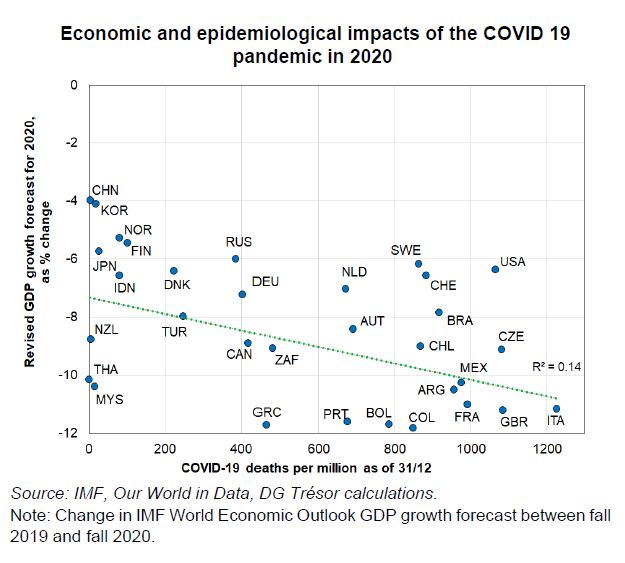The Economic Effects of Epidemics
The rapid spread of the Covid-19 epidemic in China, its evolution into a global pandemic and the contraction of activity are a reminder of the vulnerability of economies to infectious diseases. Past epidemics have had clear economic effects through several channels, ranging from a few tenths of a point to several points of GDP depending on their severity. The effects of the current pandemic would reflect both public action taken and individuals' willful avoidance.
The rapid spread of the COVID-19 epidemic throughout China in late 2019, its evolution into a global pandemic in early 2020, and the historical contraction of economic activity that followed are a reminder of the vulnerability of economies to epidemic outbreaks.
In recent decades, the world has seen a number of epidemics emerge and quickly spread, some of which remain active and continue to proliferate. Each of these epidemics has had a clear economic impact, ranging from a few tenths of a percentage point to several percentage points of GDP depending on their severity.
History suggests that there are various channels through which an epidemic can pass-through to the real economy, affecting the labour force and prompting behavioural changes as economic actors adjust to the progression of the outbreak. Epidemics can also have long-term effects on productivity and bring about structural changes. There is a general consensus in the mainstream academic literature that the more severe the epidemic, the higher the economic cost.
Quantifying the economic impact of an epidemic is an uncertain endeavour. Firstly, some epidemiological parameters are based on assumptions, introducing uncertainty from the start both in terms of public health and economic effects. Secondly, some epidemics can have relatively long-term effects, which should be factored into their overall economic cost but their consideration can be hindered by a lack of data or by the difficulty of separating out individual effects.
The economic impact of the COVID-19 pandemic appears predominantly related to the abrupt halt of global economic activity, stemming from government measures introduced in many countries as well as voluntary precautions taken by individuals. Although it is still too early to make any meaningful predictions, we can also expect to see longer-term effects, including sectoral reallocations in response to the heterogeneity of the economic shock across sectors.
